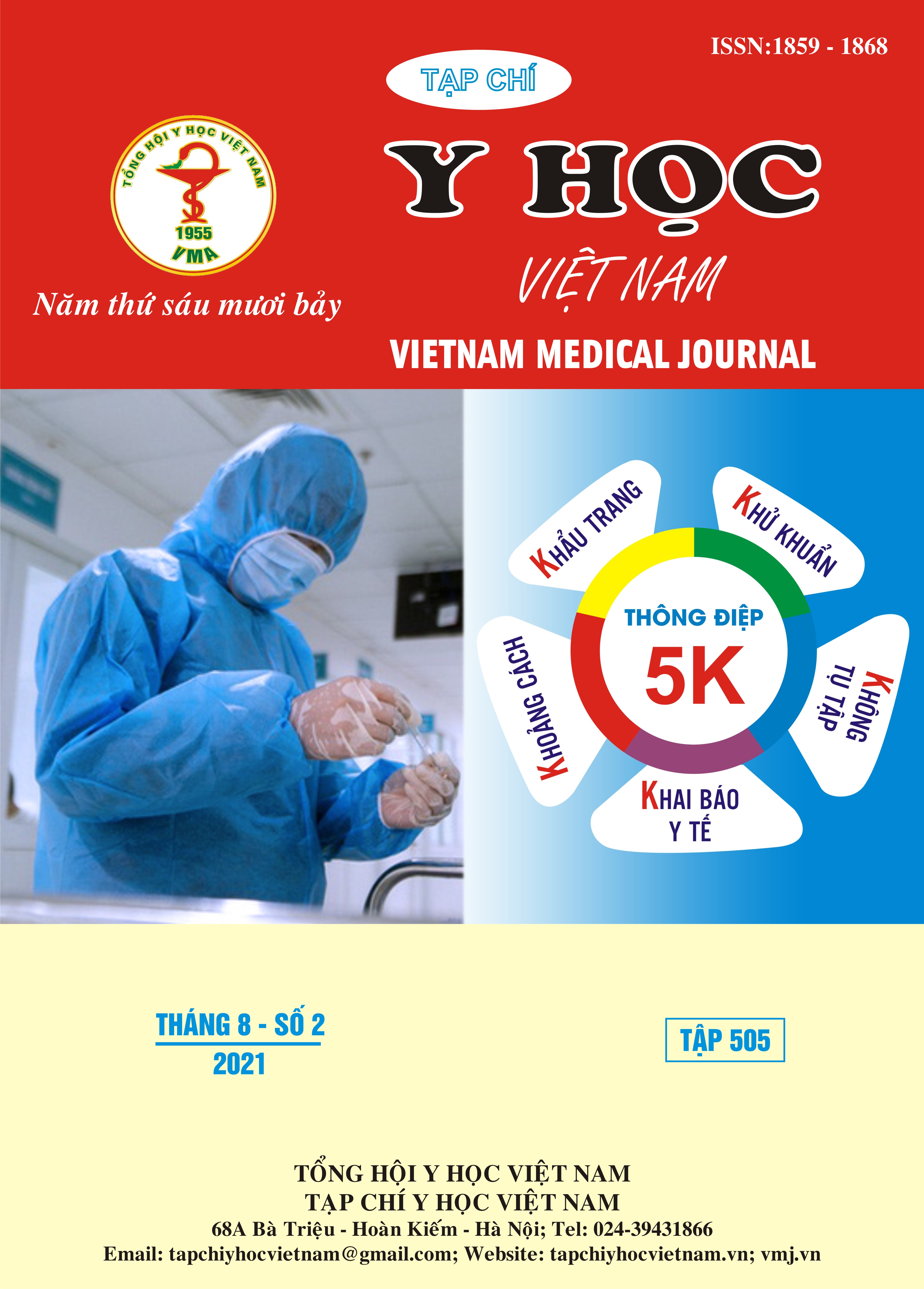EVALUATION OF THE EFFICIENCY OF T(1;19) MUTATION CHILDHOOD B - CELL ACUTE LYMPHOBLASTIC LEUKEMIA TREATMENT
Main Article Content
Abstract
Objective: To evaluate of biological characteristics, long-term outcome, survival time and complications of t(1;19) mutation childhood B-cell acute lymphoblastic leukemia treatment by using FRALLE 2000 protocol. Methods: A retrospective case series study of 38 patients met sample’s criterias with median age of 5 years old, treated with FRALLE 2000 protocol at Pediatric departments 1 and 2 – Blood Transfusion and Hematology hospital from 2010 to 2020. Results: Additional cytogenetic abnormalities were fairly common (39.5%). 89.5% of cases did not have Leukemia-Associated-Immunophenotypes (LAIPs) to detect Minimal Residual Disease (MRD) by multiparameter flow cytometry. All patients achieved complete remission after induction therapy. Overall survival (OS) and the Event-free survival (EFS) after 5 years were 84.4% and 70.9%. The cumulative incidence of relapse was 27.1%. There was no significant difference in OS, EFS between t(1;19) alone and t(1;19) with other abnormalities group. End-induction MRD was the most powerful prognostic factor, indicated that significant differences in EFS (p<0,01). Infectious complications are prominent, encountered at all stages of treatment. Treatment-Related Mortality was 2.6% (one case), due to paralytic ileus and septic shock. Conclusion: End-induction MRD positive has increased the risk of relapse. However, the majority did not have LAIPs to monitor MRD by FC, so molecular biology method is the most important to measure MRD. With the FRALLE 2000 protocol applied at the Blood Transfusion and Hematology hospital, the treatment was quite effective, equivalent to result of the general treatment of childhood acute lymphoblastic leukemia. It has been shown that t(1;19) translocation is not an adverse prognostic factor.
Article Details
Keywords
acute lymphoblastic leukemia, translocation t(1;19), E2A/PBX1 fusion
References
2. Nguyễn Phương Liên (2012). "Ứng dụng kỹ thuật tế bào dòng chảy để đánh giá tồn lưu tế bào ác tính trong bệnh bạch cầu cấp". Luận văn tiến sĩ y học.
3. Võ Thị Thanh Trúc (2010). "Đánh giá hiệu quả điều trị bệnh bạch cầu cấp lympho ở trẻ em bằng phác đồ FRALLE 2000". Luận văn tốt nghiệp bác sĩ nội trú, Đại Học Y Dược TP. HCM.
4. Felice M. S., Gallego M. S., Alonso C. N. (2011). "Prognostic impact of t(1;19)/ TCF3-PBX1 in childhood acute lymphoblastic leukemia in the context of Berlin-Frankfurt-Münster-based protocols". Leuk Lymphoma, 52 (7), pp. 1215-21.
5. Hu Yixin, He Hailong, Lu Jun (2016). "E2A-PBX1 exhibited a promising prognosis in pediatric acute lymphoblastic leukemia treated with the CCLG-ALL2008 protocol". OncoTargets and therapy, 9, pp. 7219-7225.
6. Hunger S. P., Lu X., Devidas M. (2012). "Improved survival for children and adolescents with acute lymphoblastic leukemia between 1990 and 2005: a report from the children's oncology group". J Clin Oncol, 30 (14), pp. 1663-9.
7. Uckun F. M., Sensel M. G., Sather H. N. (1998). "Clinical significance of translocation t(1;19) in childhood acute lymphoblastic leukemia in the context of contemporary therapies: a report from the Children's Cancer Group". J Clin Oncol, 16 (2), pp. 527-35.
8. Kiyokawa Nobutaka, Iijima Kazutoshi, Tomita Osamu (2014). "Significance of CD66c expression in childhood acute lymphoblastic leukemia". Leukemia research, 38 (1), pp. 42-48.


